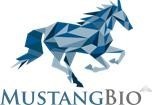The information in this prospectus is not complete and may be changed. We may not sell these securities until the registration statement filed with the Securities and Exchange Commission is effective. This prospectus is not an offer to sell these securities and it is not soliciting an offer to buy these securities in any jurisdiction where the offer or sale is prohibited.
SUBJECT TO COMPLETION, DATED JANUARY 15, 2025
PRELIMINARY PROSPECTUS

Up to Shares of Common Stock
Pre-funded Warrants to Purchase up to Shares of Common Stock
Series C-1 Warrants to Purchase up to Shares of Common Stock
Series C-2 Warrants to Purchase up to Shares of Common Stock
Series C-3 Warrants to Purchase up to Shares of Common Stock
Placement Agent Warrants to Purchase up to Shares of Common Stock
Up to Shares of Common Stock Issuable Upon Exercise of
the Series C-1 Warrants, Series C-2 Warrants, Series C-3 Warrants, Pre-funded Warrants and Placement Agent Warrants
We are offering up to shares of common stock, together with accompanying Series C-1 warrants (the “Series C-1 Warrants”) to purchase up to shares of common stock, Series C-2 warrants (the “Series C-2 Warrants”) to purchase up to shares of common stock, and Series C-3 warrants to purchase up to shares of common stock (the “Series C-3 Warrants” and collectively with the Series C-1 Warrants and Series C-2 Warrants, the “Warrants”), pursuant to this prospectus. The combined public offering price for each share of common stock, together with one Series C-1 Warrant, one Series C-2 Warrant and one Series C-3 Warrant, each to purchase one share of common stock, is $ , which is equal to the last reported sale price of our common stock on the Nasdaq Capital Market on , 2025. The shares of common stock and Warrants will be separately issued. Each Warrant will have an exercise price of $ per share, will be exercisable beginning on the effective date of stockholder approval of the issuance of the shares upon exercise of the Warrants (“Warrant Stockholder Approval”), provided, however, if the Pricing Conditions (as defined below) are met, the Warrants will be exercisable upon issuance (the “Initial Exercise Date”). The Series C-1 Warrant will expire on the five-year anniversary of the Initial Exercise Date. The Series C-2 Warrant will expire on the twenty-four-month anniversary of the Initial Exercise Date. The Series C-3 Warrant will expire on the nine-month anniversary of the Initial Exercise Date. As used herein “Pricing Conditions” mean that the combined offering price per share and accompanying Warrants is such that the Warrant Stockholder Approval is not required under the rules of The Nasdaq Stock Market LLC (“Nasdaq”) because either (i) the offering is an at-the-market offering under Nasdaq rules and such price equals or exceeds the sum of (a) the applicable “Minimum Price” per share under Nasdaq Rule 5635(d) plus (b) $0.125 per whole share of common stock underlying the Warrants or (ii) the offering is a discounted offering where the pricing and discount (including attributing a value of $0.125 per whole share underlying the Warrants) meet the pricing requirements under Nasdaq’s rules.
2